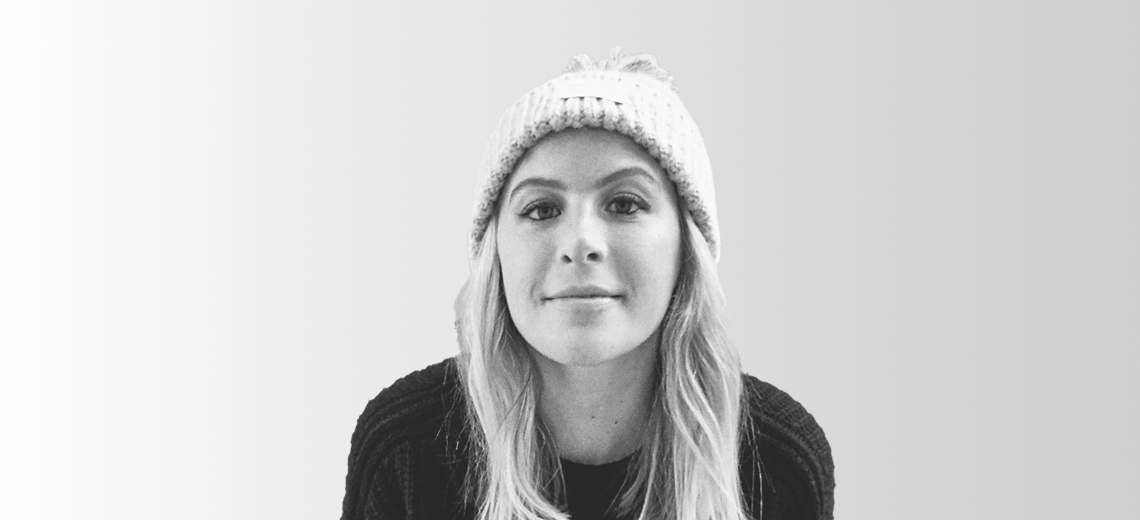This is an episode of the Glossy Fashion Podcast, which features candid conversations about how today’s trends are shaping the future of the fashion industry. More from the series →
Subscribe: Apple Podcasts • Spotify
In 2016, Molly Howard, Valerie Macaulay and Meredith Melling launched the fashion brand La Ligne determined to do fashion and business differently.
For their part, Macaulay and Melling had been Vogue editors for years and had grown tired of brands “that felt like they had to reinvent themselves season after season,” according to Howard. Meanwhile, Howard had spent a couple of years working long hours in investment banking for Credit Suisse. At the time, she’d decided that, when her time came to run a company, she’d give everyone a voice by doing away with traditional hierarchies. What’s more, she’d start the workday at 10 a.m.
Now CEO of La Ligne, Howard’s made good on those promises, she said on the latest episode of the Glossy Podcast. And Macaulay and Melling have successfully disrupted the fashion system by fulfilling their desire for a “timeless, democratic” brand. La Ligne’s pieces center on the classic stripe pattern, yet the brand offers plenty of versatility — it even sells denim.
Howard, Macaulay and Melling were first introduced after a common acquaintance noticed that they were all consulting brands but in very different ways: Howard was offering business assistance, while Macaulay and Melling were supporting creative teams. Since coming together to launch La Ligne, their complementing strengths have served the business well. For one, the brand just launched its fifth retail location, in Marin County, California, plus it’s currently expanding internationally. And, it’s worth noting, its styles were “Anna Wintour’s preferred Covid attire,” said Howard, referencing images of the Vogue editor during lockdown.
In addition, Howard discussed La Ligne’s modern approaches to the DTC model and marketing, and the way it’s prioritizing profitability while also rolling out stores. More conversation highlights, which have been lightly edited for clarity, are below.
‘Direct-to-consumer with an asterisk’
“We raised money before we launched — it was not a lot of money, just a bit, in 2015. And the [original] plan to be direct-to-consumer has pretty much remained. A large majority of our businesses are direct. [I would say] we started as direct-to-consumer but with an asterisk because we started with Net-a-Porter; they launched the brand the same day we launched the brand. So we’ve always had a little bit of wholesale — but it was more like we were switching the wholesale-direct [balance]. … We love our wholesale partners. We have more now than we did [when we launched]. But we’re very selective and careful about adding them as we grow the other side of the business, as well, so that it never overwhelms. … I want our business decisions and even design decisions driven by what our customers are telling us they want, as opposed to what a wholesale department store’s plan for the quarter looks like, in terms of the color palette or other trends.”
Prioritizing profitability
“As we were launching, there were a ton of other direct-to-consumer brands popping up, there was all this crazy venture money flowing into them, and there was such crazy spend on digital marketing. … From my years being trained as a banker — I was in the private equity space more than I was exposed to anything venture-related — the one thing that was always drilled into me was: ‘We’re only looking at businesses that are healthy, profitable, sustainable businesses.’ So it was a really big focus in mind from day one to not pump money into the company to generate topline sales while essentially buying revenue.. … I was like, ‘We will never spend $1 that isn’t a profitable sale.’ … So for the first two years of the business, we didn’t spend any money at all on digital marketing. …What we did do was invest in content creation and storytelling around a community of women who we knew or who we got to know because they became fans of the brand.”
Taking a chance on a long-term retail lease
“When we opened on Madison [Avenue], that was our first lease, and it was a tiny little store at 650 square feet. But it’s pretty expensive. And when we signed that lease, we were just like, ‘What are we doing? Is this a huge mistake?” It was 2019. We were so terrified. We opened it in May, which happened to coincide with the Met Ball. And it’s in the building of the Mark Hotel, which is where a lot of people for the Met stay. So it ended up being this crazy opening weekend, because we had all these people who were attending [the Ball] stop in and their stylists would come in and pull. We got really lucky. … I remember being like, ‘If we can break even on this store, then it’s OK, because it’s a billboard.’ But that store has exceeded expectations beyond what we could have ever imagined. That store is quite unique. It’s by far our No. 1 store, even though it’s really small. It’s a combination of being in such a high-traffic area — I think being in the hotel really works. Plus, we’re next to a Sant Ambroeus and a gym. It’s become part of this woman’s day, basically. She comes to see the new drops every Tuesday. There is also a crazy amount of tourists.”




